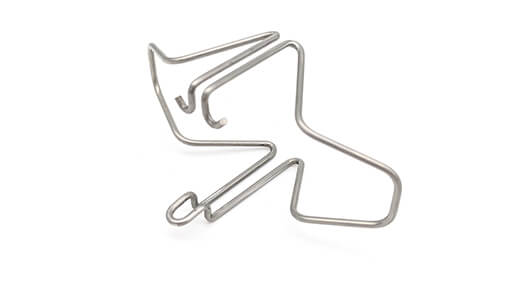Get unique, complex parts easily. No matter your requirements, Chaoyi Spring creates hard-to-produce coil springs and wire forms.
Let us help you create the custom wire form you need, from S-hooks and J-hooks to utility hooks and more.
We work closely with customers across a wide range of industries, helping them design and manufacture made-to-order parts.
Why choose Chaoyi Spring? We prioritize customer-focused collaboration, modern equipment and the latest technology to make your parts per print.
Find the information and guidance you need, from measuring a spring to learning about materials, placing an order and much more.
Small compression springs, despite their diminutive size, play a vital role in countless everyday objects. From the click of a ballpoint pen to the smooth operation of a car's suspension,


Small compression springs, despite their diminutive size, play a vital role in countless everyday objects. From the click of a ballpoint pen to the smooth operation of a car's suspension, these tiny powerhouses are everywhere, silently ensuring that things work as they should. In this article, we'll delve into the world of small compression springs, exploring their characteristics, applications, and the fascinating physics behind their operation. We'll also uncover why these seemingly simple components are so essential in a wide range of industries.

Small compression springs are helical springs designed to resist compressive forces. They work by storing energy when compressed and releasing it when allowed to expand back to their original shape. These springs are typically made from various materials, including spring steel, stainless steel, and phosphor bronze, each offering unique properties like strength, durability, and resistance to corrosion.
The versatility of small compression springs is astonishing. Their small size and high force-to-weight ratio make them ideal for use in countless applications, both big and small. Here are just a few examples:
The operation of a small compression spring is governed by Hooke's Law, a fundamental principle in physics. This law states that the force exerted by a spring is directly proportional to its displacement from its equilibrium position. In other words, the more a spring is compressed, the greater the force it exerts. This relationship is represented by the formula F = -kx, where F is the force, k is the spring constant, and x is the displacement.
The spring constant (k) is a measure of the spring's stiffness. A higher spring constant indicates a stiffer spring that requires more force to compress. This constant is a crucial characteristic of a spring, determining its performance in any given application.
Selecting the right small compression spring for your application requires careful consideration of several factors:
Small compression springs may seem insignificant, but their importance cannot be overstated. They are often the unsung heroes of many devices and products, enabling them to function correctly and reliably. From the intricate mechanisms of medical instruments to the everyday conveniences of consumer goods, small compression springs play a vital role in our world.
The next time you encounter a small compression spring, take a moment to appreciate its ingenuity. These tiny powerhouses are a testament to the power of engineering and the elegance of simple solutions. Their widespread use highlights their essential role in modern technology and underscores their impact on our daily lives.
Browse some of the custom wire forms and springs that we manufacture. Don’t see what you need? We specialize in made-to-order products that meet your application requirements.
Visit Our GalleryNeed a custom wire form or coil spring? We make it work. Fill out the contact form and a representative will respond within 1 business day. If you have a PDF or CAD file, you can submit to request a quote.